The Trump administration has amended an executive order that applies to goods being exported to the U.S., to provide an exception for smartphones, PCs and other electronic devices manufactured in China.
While some additional tariffs will continue to be applied, the U.S. Customers and Border Protection Agency has posted a notice that all electronics products properly classified under the amended Executive Order 14257 will be excluded from the reciprocal tariffs. Those reciprocal tariffs can reach as high as 125%, which is a cost absorbed by the IT vendor importing equipment manufactured in China.
Daniel Newman, CEO for The Futurum Group, said this amendment is a net positive for the technology sector. It feels like the trade conflict as early escalation created fears of a recession and chaos in the market, but in the end, we are starting to see what makes sense for tariffs and how we make sure we keep critical goods and services from being impacted too severely, he added.
Many IT organizations have increased the number of PCs, smartphones and IT infrastructure in anticipation of higher tariffs. Many more organizations were also planning to reduce their level of IT spending should the various classes of IT infrastructure manufactured in China become prohibitively expensive.
In general, organizations don’t tend to spend as much during uncertain economic times. However, there is a chronic need for more advanced systems to run next-generation artificial intelligence (AI) applications that require access to more advanced processors, memory and storage technologies.
However, many organizations may simply decide to rely more on legacy devices and systems. Many existing servers in terms of capacity are underutilized. As such, more organizations may simply opt to focus more on, for example, embracing best FinOps practices to improve cloud optimization, or, alternatively, ensure that the code they deploy runs more efficiently.
At the same time, IT vendors have been trying to find ways to evade tariffs by shifting manufacturing to countries not being targeted by the Trump administration. Apple, for example, reportedly chartered cargo flights to ferry 600 tons of iPhones, or as many as 1.5 million, to the United States from India, after it stepped up production there.
It’s not clear what impact tariffs will have on IT spending because the percentage of the tariffs being levied that might be passed along to customers is difficult to determine, especially if more manufacturing shifts to countries other than China.
In the meantime, it appears the Trump administration is starting to employ a more nuanced approach to tariffs that is more focused on lower cost goods rather than devices and core IT infrastructure that many corporations depend on to build and deploy applications.
Naturally, the degree to which the Trump Administration has a formal strategy versus simply following orders that are being formulated more by instinct than planning is being hotly debated. The one thing that is certain is cost of systems is going to rise. The only thing left to be determined now is by how much.

